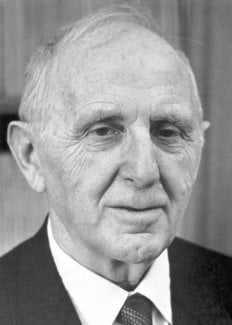Simon Kuznets
Biographical

I was born in Russia in 1901, of Jewish parents, and came to the United States in 1922 to join my father who left Russia for the United States before World War I. My university studies began in Russia, and were completed at Columbia University (B.Sc. in 1923, M.A. in 1924, Ph.D. in 1926). It was at the graduate school at Columbia University that I first met Wesley C. Mitchell with whom I was associated for many years at the National Bureau of Economic Research, and to whom I owe a great intellectual debt.
After completion of graduate studies, I spent a year and a half as Research Fellow of the Social Science Research Council (1925-1926), in work that led to monograph (1) listed in the bibliography below. As a member of the staff of the National Bureau of Economic Research, from 1927 to the early 1960s, I worked mostly on national income and capital formation in the United States; and as Chairman of the Social Science Research Council Committee on Economic Growth (1949-1968), I worked primarily on comparative quantitative analysis of economic growth of nations. Other, largely research-oriented, activities, were: Associate Director of the Bureau of Planning and Statistics and Director of Research, Planning Committee, War Production Board, 1944-1946; Chairman of the Falk Project for Economic Research in Israel, 1953-1963; member of the Board of Trustees and honorary chairman, Maurice Falk Institute for Economic Research in Israel, 1963 to date; and Chairman, Social Science Research Council Committee on the Economy of China, 1961-1970.
As Professor of Economics and Statistics, I taught at the University of Pennsylvania, part-time, 1931-1936, and full-time, 1936-1954; as Professor of Political Economy, at the Johns Hopkins University, 1954-1960; and as Professor of Economics, Harvard University, 1960-1971.
Among the scientific societies of which I am a fellow or member are: American Economic Association (president-1954); American Statistical Association (president-1949); Economic History Association (honorary member); Econometric Society (fellow); International Statistical Institute (member); Royal Statistical Society of England (honorary fellow); American Philosophical Society (member); British Academy (corresponding fellow); Royal Academy of Sweden (member).
| My major publications in the field of economic growth are: |
| 1. Secular Movements in Production and Prices, Houghton-Mifflin, Boston and New York, 1930 |
| 2. “Long-Term Changes in the National Income of the United States of America since 1870”, in Income and Wealth of the United States: Trends and Structure, International Association for Research in Income and Wealth, Income and Wealth, Series II, Bowes & Bowes, Cambridge (England), 1951 |
| 3. “Quantitative Aspects of the Economic Growth of Nations”, ten long papers published either in, or as supplement to, Economic Development and Cultural Change (University of Chicago Press), no. I in October, 1956, no. X in January, 1967. |
| 4. Capital in the American Economy: Its Formation and Financing, Princeton University Press for the National Bureau of Economic Research, Princeton, 1961 |
| 5. Modern Economic Growth: Rate, Structure, and Spread, Yale University Press, New Haven, 1966 |
| 6. Economic Growth of Nations: Total Output and Production Structure, Harvard University Press, Cambridge (USA), 1971 |
I live in Cambridge, Mass., with my wife Edith (Handler). Our son, Paul Kuznets, teaches economics at the University of Indiana; our daughter, Judith (Stein) is married to a professor of mathematics who teaches at the University of Rochester. We have four grandchildren.
This autobiography/biography was written at the time of the award and first published in the book series Les Prix Nobel. It was later edited and republished in Nobel Lectures. To cite this document, always state the source as shown above.
Simon Kuznets died on July 8, 1985.
Nobel Prizes and laureates
Six prizes were awarded for achievements that have conferred the greatest benefit to humankind. The 12 laureates' work and discoveries range from proteins' structures and machine learning to fighting for a world free of nuclear weapons.
See them all presented here.
